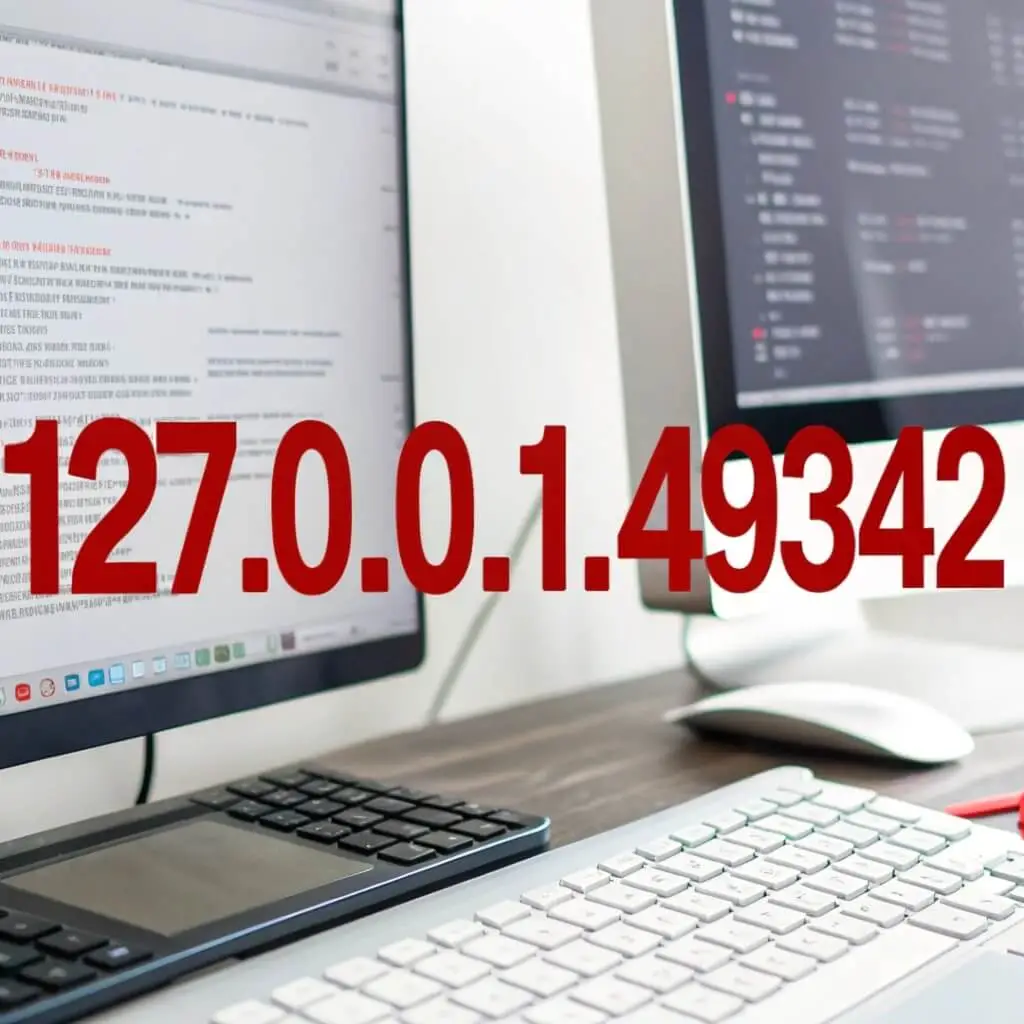Have you ever come across 127.0.0.1:49342 while working on local development or testing? In the fast-paced world of software development, there are a variety of tools and concepts that help developers ensure their applications function as expected.
One such critical tool is the combination of 127.0.0.1:49342, a local address and port number that plays a pivotal role in local development and testing. For developers working on networked applications or those testing locally, this address provides a way to interact with services and applications on the same machine without exposing them to external threats.
In this article, we’ll explore the purpose of 127.0.0.1:49342, how it works, why it’s important for development environments, and best practices for using this configuration.
What is 127.0.0.1:49342?
To fully understand 127.0.0.1:49342, let’s break it down into two key components: the loopback address (127.0.0.1) and the port number (49342). When used together, these components allow developers to interact with applications and services that are running on the same machine, without involving external networks.
1. The Loopback Address (127.0.0.1)
The 127.0.0.1 address, also known as the “localhost,” is a special address reserved for a computer to communicate with itself. When an application sends data to 127.0.0.1, it does not go out onto the internet or local network; instead, the data is routed back to the originating device. This makes it invaluable for developers who need to test and debug applications in a controlled, isolated environment.
2. The Port Number (49342)
In networking, port numbers act as gateways to specific services or applications running on a system. 49342 is an ephemeral port, meaning it is temporarily assigned for short-term connections. These port numbers are commonly used for local development, testing, and debugging, allowing multiple services to coexist on the same machine while maintaining separation at the network layer.
Why Use 127.0.0.1:49342 in Software Development?
Ensuring Secure Local Testing
One of the primary reasons developers use 127.0.0.1:49342 is to maintain a secure testing environment. By using the loopback address, developers ensure that their applications and services are isolated from the external world. This prevents unintended exposure of sensitive data and provides a safe space for testing features before they go live.
Speeding Up the Development Cycle
Since 127.0.0.1 refers to the local machine, developers can test their applications without worrying about network latency or external server connectivity. This significantly speeds up the testing and debugging process. Rather than waiting for server responses from remote machines, developers can instantly test and modify their applications on their own machine.
Full Control Over the Development Environment
With 127.0.0.1:49342, developers gain complete control over their testing environment. They can simulate different types of server-client interactions, test various configurations, and troubleshoot issues without affecting live systems. This localized approach allows for greater experimentation and faster problem resolution.
How Does 127.0.0.1:49342 Fit into the Development Workflow?
Setting Up a Local Server
When you work with 127.0.0.1:49342, the first step is setting up a local server that listens for requests at this address and port. This involves configuring your web server or application framework to bind to 127.0.0.1:49342. Most modern web servers, like Apache or Nginx, and application runtimes, such as Node.js, allow easy configuration to listen for requests at a specific IP address and port.
Example:
To configure Node.js to listen on 127.0.0.1:49342, the following code snippet could be used:
const http = require('http');
const hostname = '127.0.0.1';
const port = 49342;
const server = http.createServer((req, res) => {
res.statusCode = 200;
res.setHeader('Content-Type', 'text/plain');
res.end('Hello, World!\n');
});
server.listen(port, hostname, () => {
console.log(`Server running at http://${hostname}:${port}/`);
});
This allows the local server to handle requests made to 127.0.0.1:49342.
Interacting with Local Services
Once the server is set up and running, you can interact with it using a web browser or any application that sends HTTP requests. Instead of reaching out to external servers, these interactions occur entirely on the local machine, making them faster and more secure.
For instance, to access the service you’ve set up, simply navigate to http://127.0.0.1:49342 in your browser. This will route the request to your local server without involving any external networks.
Common Applications of 127.0.0.1:49342
Local Web Application Testing
When developing a web application, it’s crucial to test its functionality before releasing it to the public. Using 127.0.0.1:49342, developers can run their web servers locally and ensure the application works as expected. By keeping the application on the local machine, developers can test various scenarios without worrying about exposing an unfinished or vulnerable application to the internet.
Simulating Networked Interactions
For applications that require networked communication, 127.0.0.1:49342 provides an ideal environment for simulation. Developers can test how their application would behave in real-world network scenarios without needing to rely on external servers. This makes it easier to identify and resolve issues related to network protocols, client-server communication, and data transmission.
Distributed System Simulation
Developers working on distributed systems can use 127.0.0.1:49342 to simulate how various components of their system will interact. By using different port numbers on 127.0.0.1, multiple services can run on the same machine, mimicking the behavior of a more complex, distributed network without the need for external infrastructure.
Troubleshooting Issues with 127.0.0.1:49342
Addressing Port Conflicts
One of the most common issues developers encounter when using 127.0.0.1:49342 is a port conflict. If another application is already using port 49342, you will not be able to bind your service to this port. To check if the port is in use, use tools like netstat or lsof to view active connections.
How to resolve:
- If the port is in use, you can either stop the conflicting application or choose another available port number.
- For example, in Node.js, you could simply change the port number to 49343.
Dealing with Firewall Issues
Firewalls can sometimes block local network traffic, even if it’s routed through the loopback address. To resolve this, ensure that your firewall settings allow traffic to pass through 127.0.0.1:49342. This is generally not a concern unless you’re working with stricter network configurations.
Ensuring Service Availability
If your service isn’t responding as expected, check the application logs for error messages. Also, ensure the server is configured to listen on the correct address and port. Additionally, verify that no other processes are occupying port 49342, which could cause the server to fail.
Best Practices for Working with 127.0.0.1:49342
Use Random or Ephemeral Ports
While 49342 is a common port number used for local testing, it’s a good practice to use random or ephemeral ports (typically in the range 49152–65535) for temporary services. This reduces the risk of port conflicts with other services running on the same machine.
Document Port Assignments
In larger projects or team-based environments, it’s essential to document which ports are used for which services. This will help prevent conflicts and ensure smooth collaboration between developers who are working on different services that may need to bind to ports.
Keep Local Services Secure
Even though 127.0.0.1 is secure by design, always be mindful of potential misconfigurations that could accidentally expose local services to external networks. Ensure your firewall is configured to only allow local connections, and avoid running unnecessary services on the loopback interface.
Frequently Asked Questions (FAQs)
What does 127.0.0.1:49342 represent?
It’s a local address (127.0.0.1) combined with a port number (49342) used for testing and development on the same machine.
Can 127.0.0.1:49342 be accessed remotely?
No, it’s a loopback address that is only accessible from the local machine.
Why should I use 127.0.0.1 for testing?
It allows you to test applications in a secure, isolated environment without exposing them to external networks.
Can I use a different port instead of 49342?
Yes, you can use any available port, as long as it is configured properly within your application.
How do I check if port 49342 is free?
You can check for port availability using tools like netstat or lsof to view active connections and services.
Is 127.0.0.1 completely secure?
While it is generally secure, it’s important to ensure proper configurations and stay vigilant against local security threats.
How can I change the port number for my service?
You can modify the configuration settings in your application or web server to listen on a different port.
Can multiple services use 127.0.0.1:49342 at the same time?
No, only one service can bind to a specific port at a time. You will need to choose another port if it’s already in use.
What are ephemeral ports?
These are short-term, dynamically assigned ports used for temporary connections, typically in the range of 49152-65535.

How can I manage local ports effectively?
Keep a record of which ports are in use, avoid conflicts by using unique ports, and limit access to only local connections.
Conclusion
In conclusion, 127.0.0.1:49342 is a vital tool for developers, enabling them to create secure, efficient, and controlled local environments for testing and debugging. The loopback address combined with a port number like 49342 provides developers with the flexibility to simulate server-client interactions, troubleshoot applications, and test web services without involving external networks.
By understanding how to use this combination effectively and following best practices, developers can streamline their workflows and improve the security of their local testing environments.
